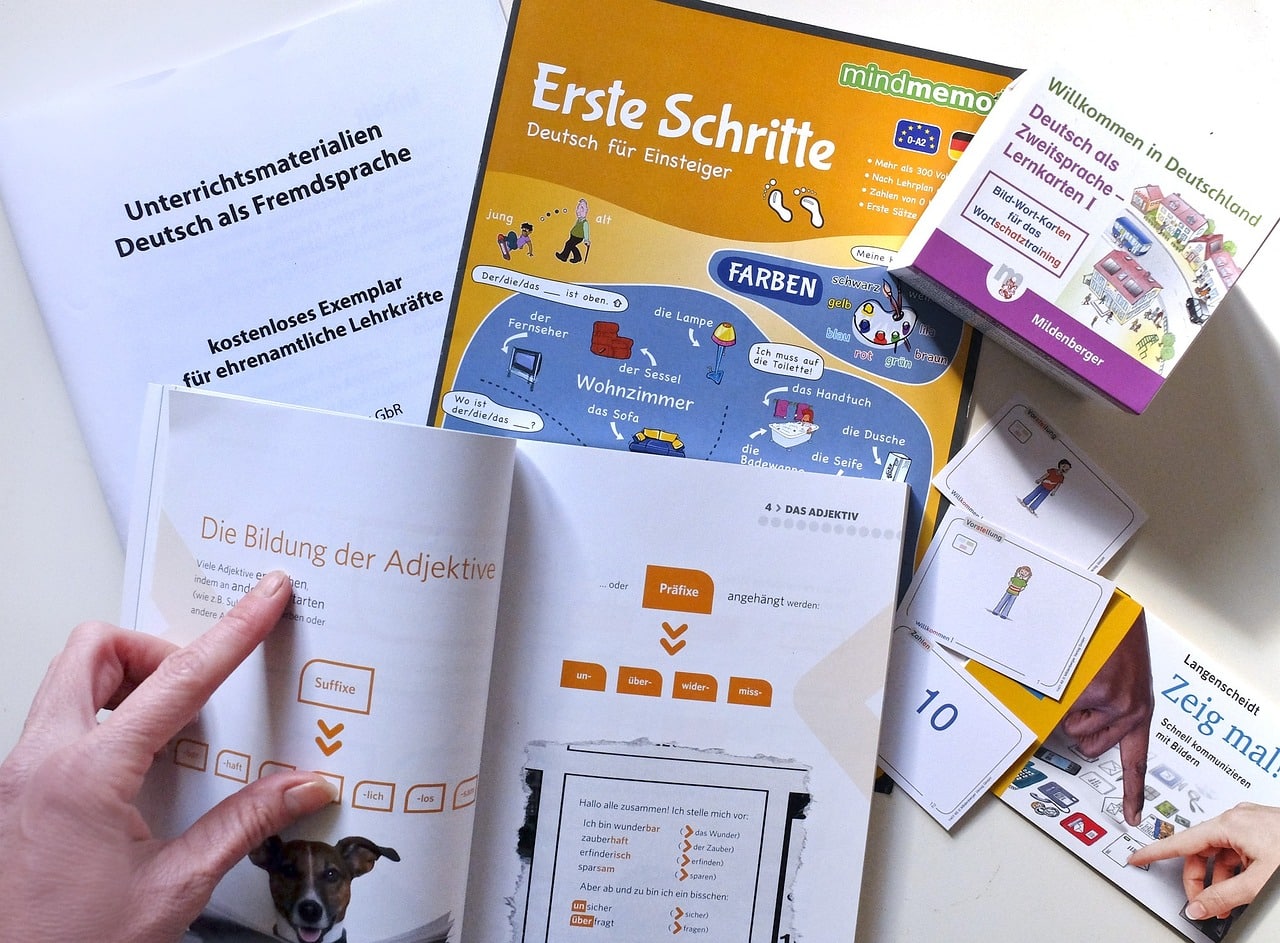
Meet the German Language: History, Culture, Linguistics and FAQ
What comes to mind when I say “German language”?
Is it castles, Biergärten (beer gardens) and pretzels?
Or is it intimidating grammar rules and hard-to-pronounce words?
All relevant—but these are just surface-level details about the German language.
The German language has a complex and fascinating history that has shaped the European continent into what it is today and it continues to be a major force in the modern world.
Let’s delve deeper into this magnificent language!
Contents
- 1. What Is German?
- 2. Varieties of German
- 3. German Culture
- 4. Why Learn German?
- 5. FAQ About Learning German
Download: This blog post is available as a convenient and portable PDF that you can take anywhere. Click here to get a copy. (Download)
1. What Is German?
If you’re interested in one day learning German, knowing about the German language will help contextualize your future learning. Here’s a crash course!
A short history of the language
Around the 6th century AD, Old High German developed in the highlands of modern day southern Germany, Austria and Switzerland.
This was the earliest form of German, evolved from a single parent language called Proto-Germanic, which dates back to the beginnings of the Indo-European language family.
Old High German would evolve into Middle High German around the turn of the first millennium and then, by the 17th century, into the earliest form of Hochdeutsch (Standard High German) that we know today.
Notable characteristics of German
- Alphabet: German uses the Latin alphabet: the same used in English, French and Polish. There are a few symbols that English doesn’t have, however, such as the German letter ß (pronounced as an “s” sound) and the little dots on certain vowels called umlauts on the ä, ü and ö.
- Phonetics: German is stereotyped as a harsh-sounding language, likely because consonants are used at a relatively high frequency (unlike many Romance languages such as Italian and Spanish that use more frequent vowel sounds).
German also has some sounds that don’t exist in English—like the ch sound, as in ich (I) and hoch (high).
- Grammar: German has noun inflections (called cases) that cause articles to change depending on their role in a sentence (subject, object, etc.). There are also three noun genders (masculine, feminine, neuter), so altogether, there are quite a few ways to say “the.”
- Vocabulary: German also has a reputation for complex word-building, leading to very long words. The language has the ability to continue to combine or add elements to a single word, modifying and adding complexity to the original meaning.
This sometimes gives us words that are quite a mouthful, such as Rechtsschutzversicherungsgesellschaften (companies that provide legal protection).
Similarities between German and English (and other languages)
Because of its parent language, Proto-Germanic, German has a lot in common with its sibling languages. English and German are both West Germanic languages, making them pretty close linguistically.
Like English, German verb conjugation is rather straightforward. There are many irregular verbs (compare “play” and “played” to “think” and “thought” in English), but these are easy to memorize. There are less verb conjugations in German than in languages like French or Spanish.
There are also substantial similarities between German and English words.
In fact, according to Ethnologue, English and German have a lexical similarity of 60%. This means that 60% of English words will be familiar to English speakers, and they offer a sort of “cheat” to learning new German vocabulary.
German also shares a lot of linguistic similarities with other members of the Germanic language family, like Dutch, Swedish, Danish, Norwegian and even Icelandic. Speakers of these languages will also find German quite familiar.
2. Varieties of German
German is a language with its own dialects. While these dialects are often understandable by native speakers, they can be tricky for learners.
German Standard German
This is the official written and spoken language of Germany used by the government, official institutions, the media and the education system.
Learners of the German language are most likely learning German Standard German (unless they’re specifically taking a course in another variety), and it is mostly like what you’d find in foreign language textbooks.
Despite this, there are a number of dialects and varieties of German within Germany that learners are likely to encounter that can be very different from German Standard German:
- Plattdeutsch (also called Low German or Low Saxon) is spoken by approximately 2.5 million speakers in northern Germany as well as in the Netherlands. German Standard German can be understood, but Plattdeutsch is the language of everyday life in cities like Münster, Brandenburg, Hamburg and Hannover.
- Central German is a collection of dialects spoken in the middle of the country, including the cities of Frankfurt, Cologne, Berlin and Dresden. Luxembourgish (an official language of nearby Luxembourg) is a variety of Central German.
- Alemannic, Swabian and Bavarian are spoken south of the Central German dialects. Alemannic is spoken in cities such as Stuttgart and is the basis for Swiss Standard German. Swabian is a variety of Alemannic spoken in Braden-Württemberg. Bavarian, the basis for Austrian Standard German, is spoken in the Bavarian region, including the city of Munich.
- Pennsylvania Dutch is a dialect of the German language that was brought to parts of the United States in the 1800s. The immigrants brought their language as well as their culture, and Pennsylvania Dutch remains a large part of the Amish and Mennonite way of life.
Swiss Standard German
Swiss Standard German is the dialect of German spoken in Switzerland. It is used by the government, official institutions, the media and the education system in the country.
There are many differences in pronunciation, grammar and vocabulary between Swiss Standard German and German Standard German. These can be so great that even Germans need subtitles to understand the Swiss dialect at times!
Austrian Standard German
Austrian Standard German is the dialect of German used in Austria, including by the government, official institutions, the media and the education system.
While Austrian Standard German is officially almost the same as German Standard German, in practice it also has its own particularities in grammar, vocabulary and pronunciation.
Yiddish
While officially a distinct language, Yiddish is sometimes considered a dialect of German due to the high level of lexical similarity. Originally spoken by Jewish populations in Central and Eastern Europe, it has since spread to all corners of the world.
Yiddish retains much of the vocabulary and grammar structures from German, but contains many borrowed words from Hebrew and other languages.
Speakers report some mutual intelligibility between the spoken languages, but German speakers have a disadvantage due to unfamiliar words and phrases.
However, Yiddish and German are not mutually intelligible as written languages, since Yiddish uses a modified Hebrew alphabet—unreadable to most German-only speakers.
3. German Culture
Languages don’t exist on their own, and so German is the sum of the people who speak it and their idiosyncrasies and commonalities. Here’s some background on those aspects.
German humor
A survey from 2011 found that Germany was rated the least funny nation on Earth, but that might just be because non-Germans don’t understand German humor.
German humor is steeped in political satire and social taboo. This can pose a problem if the listener or viewer doesn’t understand the political or social culture in Germany.
If you learn more about the German way of life, you may find that Germans aren’t so humorless after all!
German gestures and body language
German speakers have their own gestures and body language for conveying unspoken messages.
For example, to wish someone luck, you won’t cross your fingers but instead press your thumb into the palm of your other hand and squeeze: drück die Daumen (press the thumb).
And you know that O shape you make with your index finger and thumb? That’s considered rude by some German speakers!
German etiquette
Being polite is important in any language. You don’t want to sour a relationship by inadvertently being rude.
Here are some German etiquette pointers:
- Use the pronoun Sie (you) and the Sie forms of the verb when talking to someone you don’t know or whenever the occasion calls for formality.
- Dess nicely for formal events, be punctual and don’t walk into someone’s house unless you’ve removed your shoes at the door.
- There is special etiquette for work and business. For instance, make sure to shake hands with business associates, even if there are multiple or if you’ve met them before; skipping a handshake with someone is considered rude.
- Stick to plans once they are made, especially at work. Adjusting them or ignoring them will get you talked about at the water cooler, and not in a nice way.
- Did I mention being punctual? In Germany, that’s important both in and out of the business world.
German food
Not surprisingly, German food is as varied as the multitude of distinct regional and immigrant cultures within the German-speaking world.
There are some dishes, however, that most German speakers agree are the best, and these can be found in most German restaurants.
German Wurst (sausage), Schnitzel (breaded pork or turkey) and Sauerkraut (pickled cabbage) are stereotypical German foods for a reason: They are well enjoyed and plentiful!
Other common foods include Käsespätzle (a German macaroni and cheese dish) and Reibekuchen (traditional German pancakes). Also, did I mention that Germans love Spargel (asparagus)? They have an entire festival for its harvest!
As a country of immigrants, Germany has incorporated and enjoyed non-traditional food in recent years. Favorites include Currywurst (sausage doused in curry powder) and Döner kebab (a Turkish kebab sandwich). These are particularly satisfying after a night of drinking German Bier (beer).
German holidays
Traditionally a Christian nation, German religious holidays should be quite familiar to those from other Western nations.
For example, Germans celebrate:
- Weihnachten (Christmas Eve)
- Weihnachtstag (Christmas Day)
- Karfreitag (Good Friday)
- Ostermontag (Easter Monday)
These celebrations are marked with church attendance, gatherings with family and friends as well as decorations and elaborate meals.
I also suggest heading to a Weihnachtsmarkt (Christmas market) if you’re in a German-speaking place for the holidays. These are great places to find cool Christmas gifts while enjoying traditional German food and Glühwein (mulled wine).
Germany also has national holidays such as Tag der deutschen Einheit (Day for German Unity) which celebrates the reunification of West and East Germany.
Germans are also game for a good party. Like other Western nations, Germans celebrate Silvester (New Year’s Eve) with a big party.
And who could forget Oktoberfest, a month-long German celebration in late September and early October dedicated to drinking beer and hanging out.
German popular culture
Though influenced by other major Western popular cultures such as the United States, Great Britain and other European countries, the German-speaking world retains many aspects of its own pop culture.
German speakers make their own music, movies and TV shows entirely in their language. In fact, it’s not hard to find German pop, rock and rap music on streaming services such as Spotify or YouTube.
Other streaming services like Netflix have many German movies and TV shows, too.
The German-speaking world also has its own media conglomerates. These channels host news in German as well as television shows, which can usually be found on their websites.
4. Why Learn German?
Sure, the German language is connected to a fascinating history and a vibrant culture (or cultures). But there must be more to learning German than just an interesting military history, Schnitzel and German beer, right?
Well, there are lots of benefits to learning German! For example:
- Word-building is creative and fun. Because of the way the German language is structured, you can express virtually anything by building compound words. For instance, “trying to make something better but just making it worse” is verschlimmbessern in German.
- It’s a language of international business. Beyond Germany, the German language can help you shop and conduct business all throughout the Eurozone (the 19 countries that use the euro). Germany is also the biggest economy in the Eurozone, so you’ll have access to quality higher education, job opportunities and international business endeavors.
- It isn’t as hard to learn as you might think! For native English speakers, German is only a Category II language. In just 36 weeks (about 900 class hours), learners can reach a working competency level in German.
For more compelling reasons to learn German, visit this post:
Why Learn German? 14 Good Reasons To Learn the Language of Poets and Thinkers | FluentU German Blog
Why learn German? If you need convincing to start (or continue) your German language journey, then read this post. We’ve gone over 14 excellent reasons to learn German. We…
5. FAQ About Learning German
Interested in learning the amazing language we call German? Check out some common questions that may arise when deciding to take the plunge.
Which variety of German should I learn?
Start with German Standard German. This is the easiest variety to find learning resources for, pretty much every German speaker understands it, and it’s easy to learn local slang and dialectal differences once you already have a base in the language.
Then, you can ask yourself the following question: Where do you plan on speaking German?
If you have a specific place you plan on living, studying or working long-term, you should plan to study that location’s dialect—Swiss German, Austrian German or one of the variations of a specific region in Germany.
How hard is it to learn German?
While it may be tricky to learn German declensions for noun cases, the language makes up for this with a pretty simple verb conjugation system.
Writing and pronunciation are also intricately connected in German, so it’s spelled exactly how it’s pronounced (unlike some languages… looking at you, French and English).
A background in English or even knowledge of another similar language (Dutch, Afrikaans, Swedish, Danish) will make learning German easier. These languages are part of the Germanic language family, so they share a large number of vocabulary and grammatical features.
How long does it take to learn German?
This question is entirely based on you as a learner.
You will learn German quicker if you put more time into the process, and your method matters, too.
In official terms, like I mentioned earlier in the post, you should estimate at least 900 hours of study to reach a communicative level of German.
How Long Does It Take to Learn German? Plus 4 Helpful Hacks to Speed Up the Process | FluentU German Blog
How long does it take to learn German? How can you speed up the process? Well, depending on how much time you have and your dedication to learning and immersing yourself…
What’s the best way to learn German?
Knowing how you learn best is a great way to pick a method that will work for you. For example, if you learn best by reading and writing, you should learn German with a textbook.
If you learn best by watching and listening, you should learn German with an audio or video course.
Regardless of your preferred learning style, immersion in authentic German content is key. Aim to surround yourself with real German as much as possible—just doing grammar exercises from a drill book won’t fully prepare you to speak and understand real German.
Instead, you should aim to listen to the language as much as possible, read the language as much as possible and use the language as much as possible.
To do so, you can watch German TV shows and movies, listen to German music and podcasts, read German books and articles and practice your German speaking skills with native speakers. It may be intimidating at first, but this immersive learning will yield the quickest results.
You can also try a study tool like FluentU.
FluentU is one of the best websites and apps for learning German the way native speakers really use it. FluentU takes real-world videos—like music videos, movie trailers, news and inspiring talks—and turns them into personalized language learning lessons.
Watch authentic media to simultaneously immerse yourself in the German language and build an understanding of the German culture.
By using real-life videos, the content is kept fresh and current. Topics cover a lot of ground as you can see here:
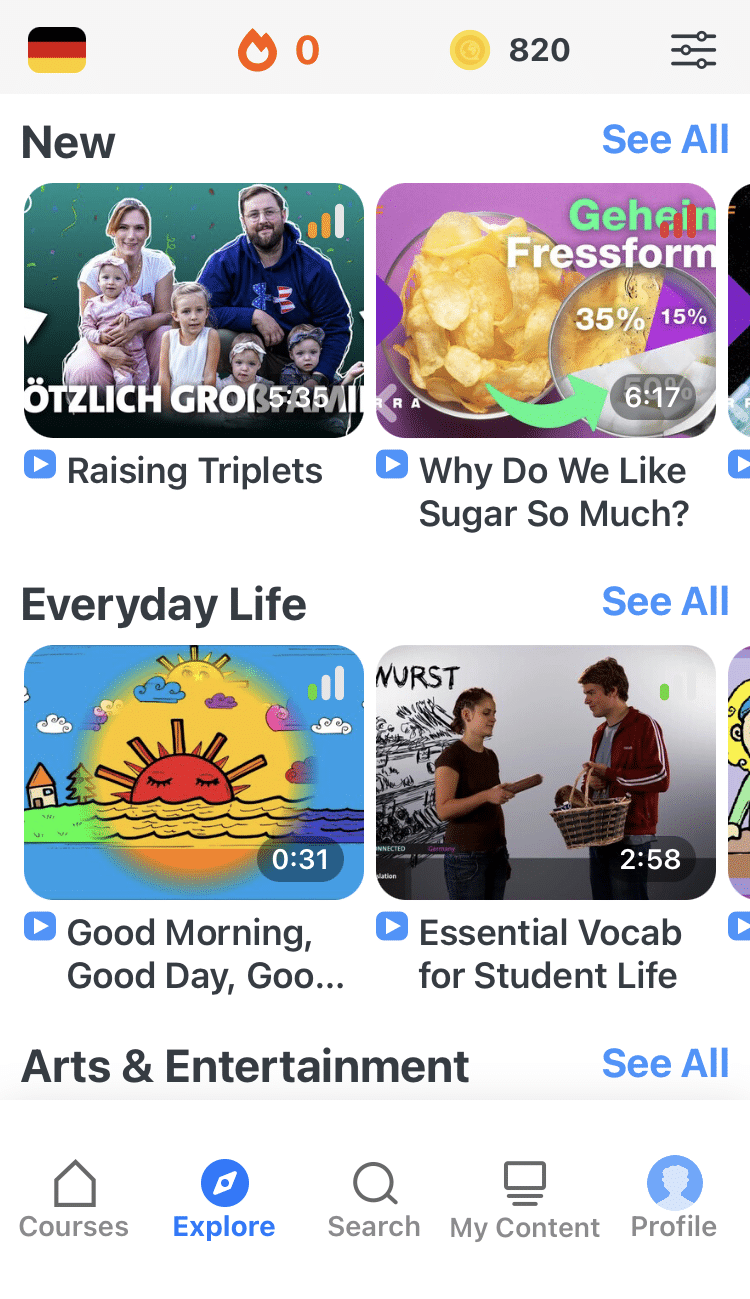
Vocabulary and phrases are learned with the help of interactive subtitles and full transcripts.
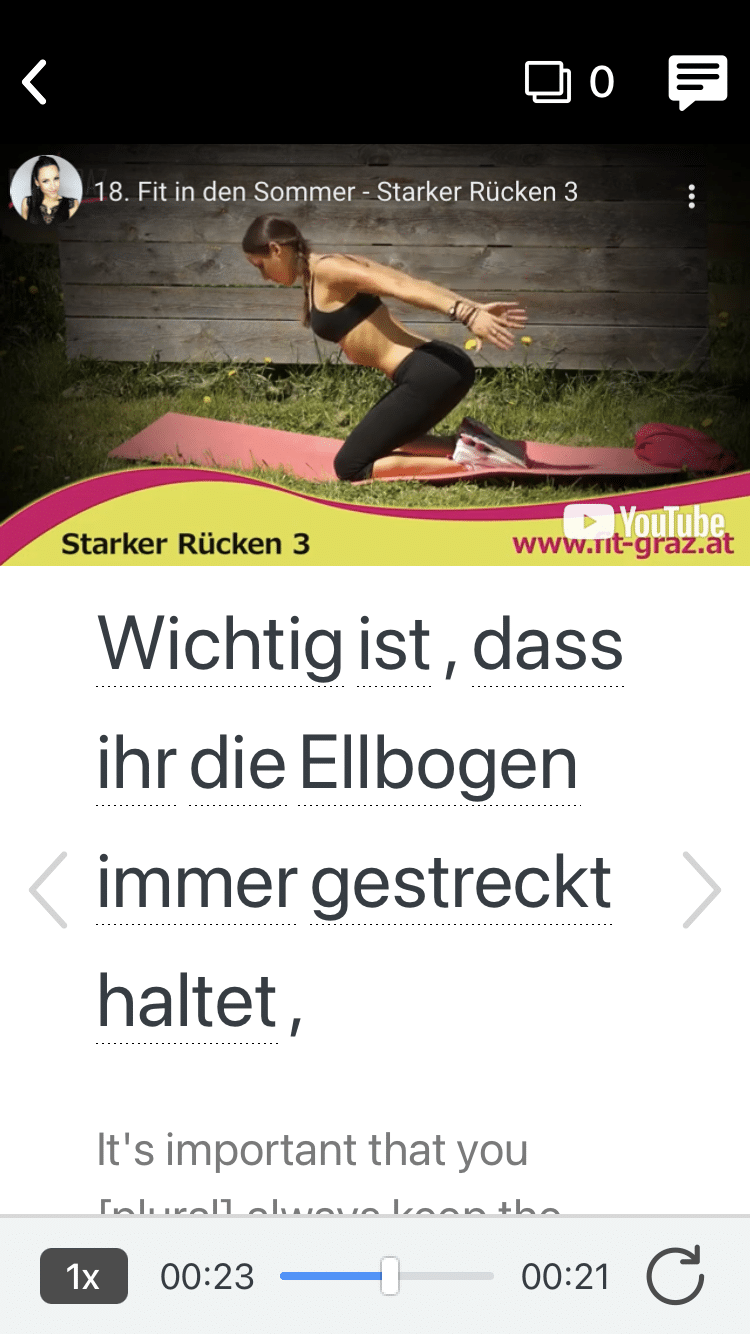
Hovering over or tapping on any word in the subtitles will automatically pause the video and instantly display its meaning. Interesting words you don’t know yet can be added to a to-learn list for later.
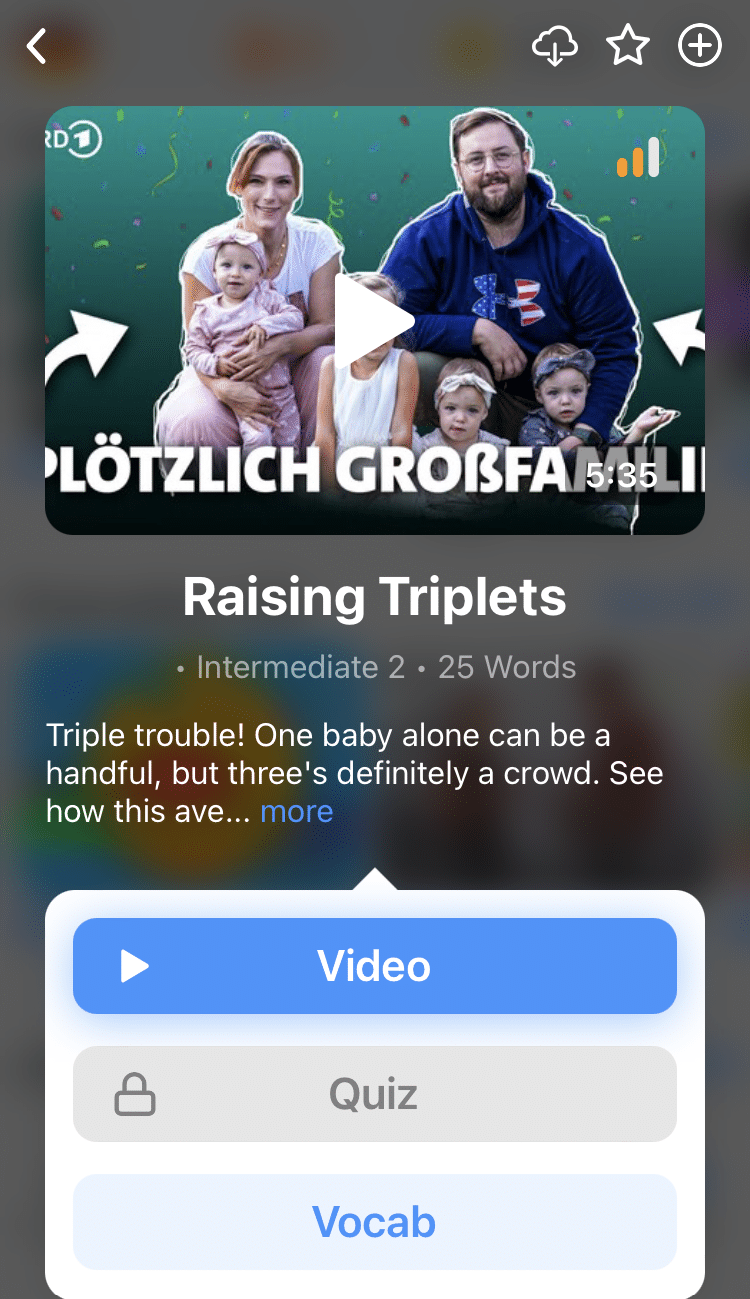
For every lesson, a list of vocabulary is provided for easy reference and bolstered with plenty of examples of how each word is used in a sentence.
Your existing knowledge is tested with the help of adaptive quizzes in which words are learned in context.
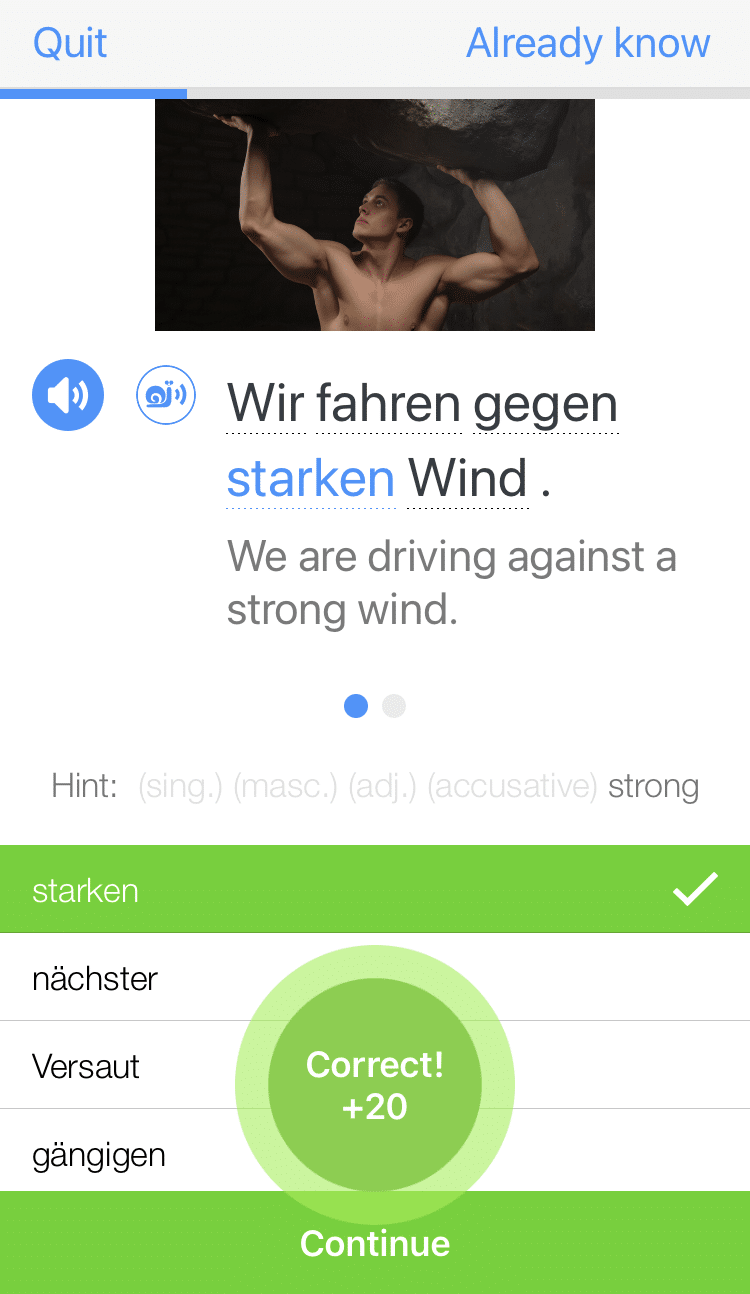
To keep things fresh, FluentU keeps track of the words you’re learning and recommends further lessons and videos based on what you've already studied.
This way, you have a truly personalized learning experience.
Start using the FluentU website on your computer or tablet or, better yet, download the FluentU app from the iTunes or Google Play store. Click here to take advantage of our current sale! (Expires at the end of this month.)
Which jobs require German?
There are countless jobs in the German-speaking world that require fluency in the language:
- Working at a restaurant, grocery store or any German business, especially if most of the company’s clients are German speakers.
- English speakers who also have fluency in German can likely find a job as an English teacher—which doesn’t require German, but being bilingual is typically an asset.
- German proficiency is also an asset in both the tourism industry within a German-speaking country and in the business field with European contacts.
- And, as expected, a German translator or interpreter should have a high level of German proficiency.
https://www.fluentu.com/blog/german/jobs-that-require-german/
Which German language exam should I take?
German language exams are not necessary for learning the language, but many German-language jobs and schools require their workers or students to have a certified level of German.
Each German proficiency exam has a slightly different function.
The Deutsche Sprachprüfung für den Hochschulzugang (German Speaking Exam for University Entry) and the Test Deutsch als Fremdsprache (German Test as a Foreign Language) are both common for entry to a German university.
5 Things to Keep in Mind While Preparing for the DSH Test | FluentU German Blog
Are you going to be taking the DSH test? Check out this guide to find out about five things you can do to help yourself prepare for the exam. From setting a study schedule…
TestDaF VIP: Your All-Access Pass to a German University
Every German university recognizes the TestDaF! Here’s your guide to this German language exam’s format, grading and study tips to crush it.
Besides those two, the Goethe Institute offers a number of German proficiency exams divided into the levels outlined in the Common European Framework of Reference for Languages (CEFR).
The Goethe exams are usually taken by people looking to prove their proficiency for a German-speaking job or gain German citizenship.
What’s on the Goethe-Zertifikat and How to Know If You’re Ready
Want rock solid proof that you know German? Check out this guide to the Goethe-Zertifikat language exam and how you can prepare at your level.
That was a pretty deep dive! Now that you know the ins and outs of the language, what are you waiting for? This magnificent language is ready for you!




